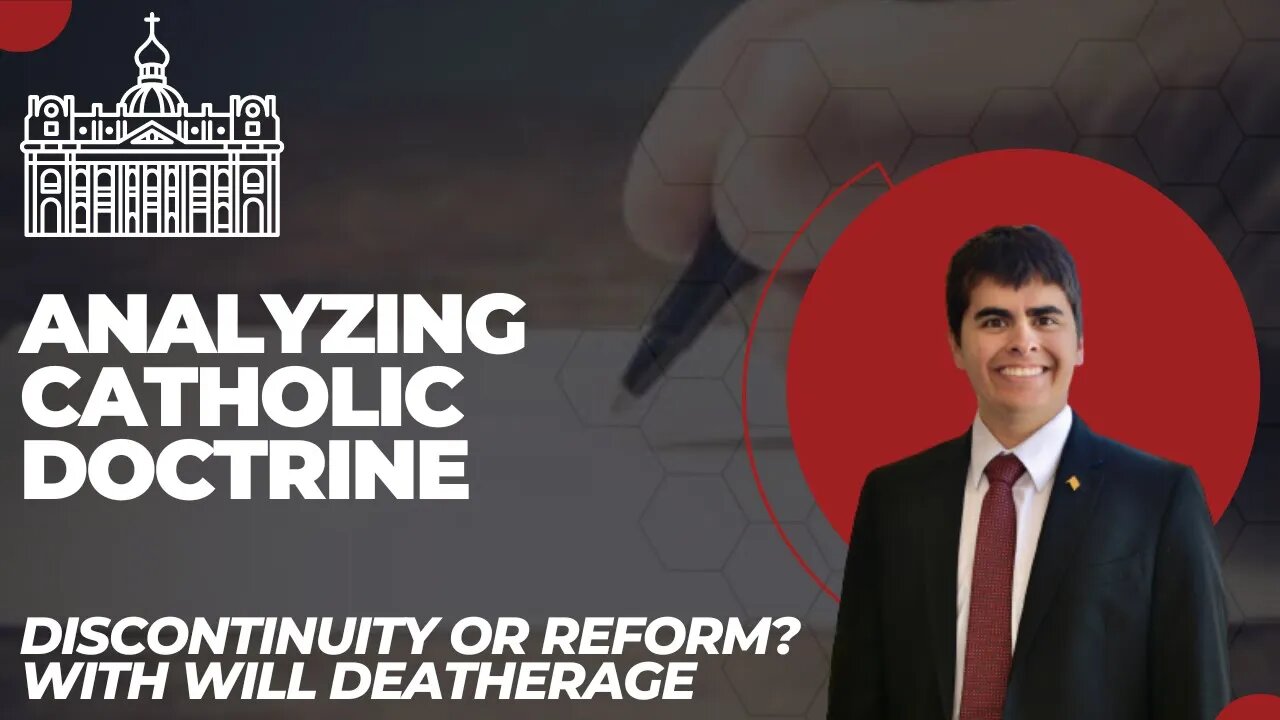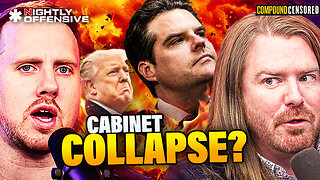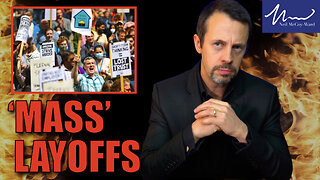Premium Only Content

How to Analyze Catholic Doctrine (Discontinuity or Reform Episode 4)
"Analyzing the source, type, intention, assumption, scope, reception, and interrelation of magisterial statements can help to distinguish their abiding principles from their changeable expressions and applications. These criteria can also be used to evaluate whether two seemingly incompatible magisterial statements are discontinuous with each other, which is precisely what the following chapters will attempt to do with Cantate Domino from the Council of Florence and Lumen Gentium from the Second Vatican Council.”
Read the Thesis Here: https://clarifyingcatholicism.org/essays/theses/florence-and-vatican-ii-on-other-religions-discontinuity-or-reform/
Music: Cabin Fever by ARSNK: https://soundcloud.com/arsnkmusic/cabin-fever
Outro: Bright White by Shifting Shadows https://from-the-forest.bandcamp.com/album/lighthearted-ep
The Second Vatican Council’s theology of other religions is frequently cited as an example of doctrinal discontinuity in the Catholic Church, since the language of Lumen Gentium 16 from Vatican II seemingly contradicts that of Cantate Domino from the Council of Florence. At face value, the two statements appear at odds; whereas the latter condemns non-Christians to hell, the former asserts that practitioners of other religions can be saved. However, an analysis of each document’s source, authoritative level, intention, assumptions, scope, reception, and accompanying theological ideas reveals that they actually express and apply the same dogmatic principles to different time periods and cultural contexts, which constitutes authentic reform, rather than discontinuity.
Series on Ecumenical Councils: https://www.youtube.com/playlist?list=PLPnp45TCxDtPeT-lOsnFhGn2bShv0vAoL
Series on Magisterial Authority: https://www.youtube.com/playlist?list=PLPnp45TCxDtNMKUDRtQ15pZDTBCCj4Xg_
-
 3:55:45
3:55:45
Alex Zedra
10 hours agoLIVE! Last Map on The Escape: SCARY GAME.
79.8K3 -
 1:14:07
1:14:07
Glenn Greenwald
14 hours agoComedian Dave Smith On Trump's Picks, Israel, Ukraine, and More | SYSTEM UPDATE #370
177K264 -
 1:09:07
1:09:07
Donald Trump Jr.
17 hours agoBreaking News on Latest Cabinet Picks, Plus Behind the Scenes at SpaceX & Darren Beattie Joins | TRIGGERED Ep.193
215K765 -
 1:42:43
1:42:43
Roseanne Barr
13 hours ago $64.32 earnedGod Won, F*ck You | The Roseanne Barr Podcast #75
96.9K204 -
 2:08:38
2:08:38
Slightly Offensive
14 hours ago $42.01 earnedDEEP STATE WINS?! Matt Gaetz OUSTED as AG & Russia ESCALATES War | Guest: The Lectern Guy
93.7K57 -
 1:47:36
1:47:36
Precision Rifle Network
13 hours agoS3E8 Guns & Grub - the craziness continues
70.4K4 -
 41:37
41:37
Kimberly Guilfoyle
15 hours agoPresident Trump Making all the Right Moves,Live with Border Union Chief Paul Perez & Lawyer Steve Baric | Ep. 176
157K48 -
 19:38
19:38
Neil McCoy-Ward
18 hours agoMASS LAYOFFS Have Started... (How To Protect Your Income)
60.5K9 -
 46:21
46:21
PMG
1 day ago $7.65 earned"Venezuelan Gang in 16 States, Animal Testing Crackdown, & Trump’s Nominee Battle"
43.9K12 -
 4:54:08
4:54:08
VOPUSARADIO
17 hours agoPOLITI-SHOCK! WW3!?, BREAKDOWN OF THE WORLD EVENTS & R.A.G.E. (What it means & What's next!)
34.1K7